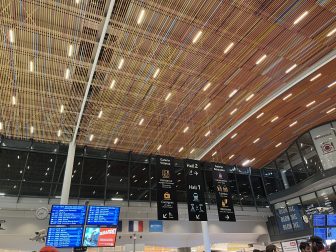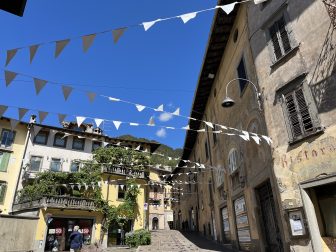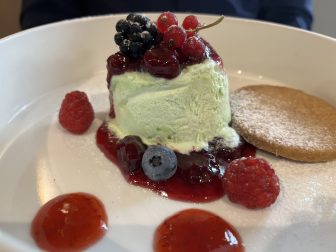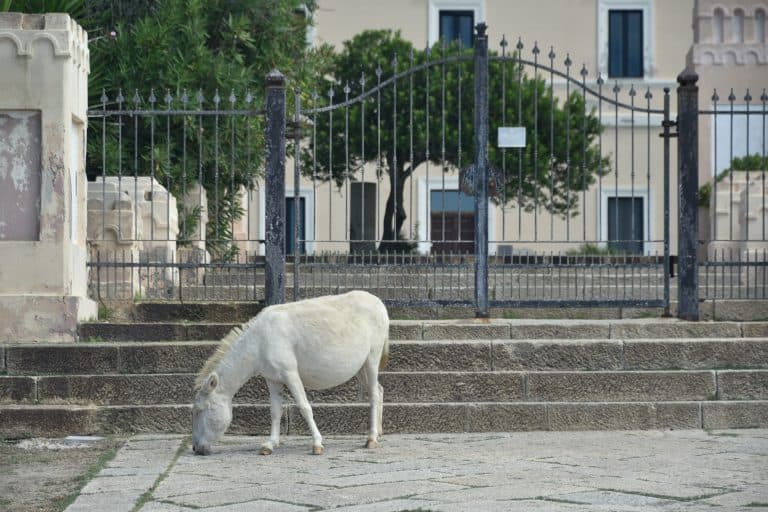
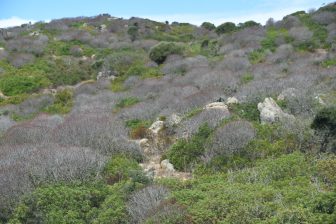
[Sept. 2020] This is a continuation of the tour of Asinara Island, which is located at the tip of the northwestern part of Sardinia Island in Italy.
Asinara is a nature reserve.
After the prison tour, there was an explanation about nature.
While travelling on a train-type sightseeing bus, we saw the shaved-head-like small trees that looked like as if it was the scene after a forest fire.

These are rare plants without leaves, and because they are poisonous, they increase without being eaten by animals.
We stopped at the side of the road and the guide explained about various plants there.
There was a cute thick plant, but this one was poisonous, too.
Another plant was apparently good for throat, and when I touched it and smelled my finger, it smelled pretty good.
And there was a plant called “Mother-in-law’s cushion”, which was a prickly bush.
The most famous wild animals that live on the island are the white donkeys.
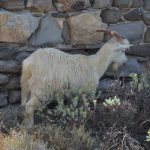
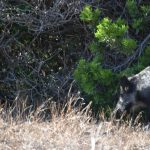
They are albino donkeys, which survived in the limited environment of the island and increased by mating, but they are basically weak animals, with almost no eyes and weak skin.
Apart from these ones, there are also normal gray donkeys.
The name of the island, Asinara, is said to come from Agino (donkey in Italian), so you can say that it is the island of donkeys.
In addition, goats and wild boars also live there.
We saw donkeys, goats and wild boars along the way.

What is peculiar on this island is a goat whose claws grow steadily (I forgot the name of it).
For this reason, they are constantly brushing their nails by going up and down the rocks.
I wanted to see one, but these goats were so shy that they would rarely come out on the streets we would pass through.
The next stop was Cala Reale (royal cove).
The name comes from the fact that in the 19th century, not only prisoners but also the king came and stayed here.
We saw the white goats here.
They seemed not to be able to see well as the guide told us, and I felt very sorry.
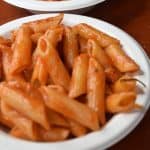
In the normal world where the stronger prey upon the weaker, they would have been eliminated long time ago.
The boat that we came to this island by moved to this cove and was moored, and we had lunch in it.
Our names were checked and we were taken to the designated seat.
They served the dish of very simple macaroni.
It was simple, but the seafood sauce was delicious and my husband had the second helping.
This was included in the tour price.
After a meal, we headed to the hill behind the only village on the island, Cala d’Oliva.
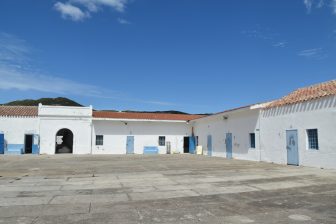
We visited the place which used to be an open prison here.
There was the spacious courtyard and the rooms of the prison was surrounding it, which somehow reminded me of South America, especially the town of Villa de Leiva in Colombia.
There was a small museum where the tools used at that time and the history of the museum were exhibited.
The prisoners here are said to have been engaged in agriculture.
There is also a medical room and barber shop.
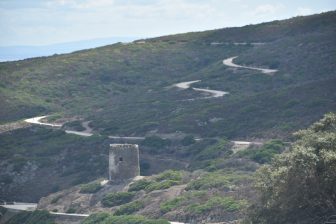
The sky, which tended to be cloudy at the beginning of the tour, has cleared up completely here, and probably because of that, this prison looked bright and happy.
There was also a small souvenir shop where the works of local craftsmen were placed, and there were also works of a person who retired from the prison guard and became a sculptor.
The view from the small hill was also wonderful.

